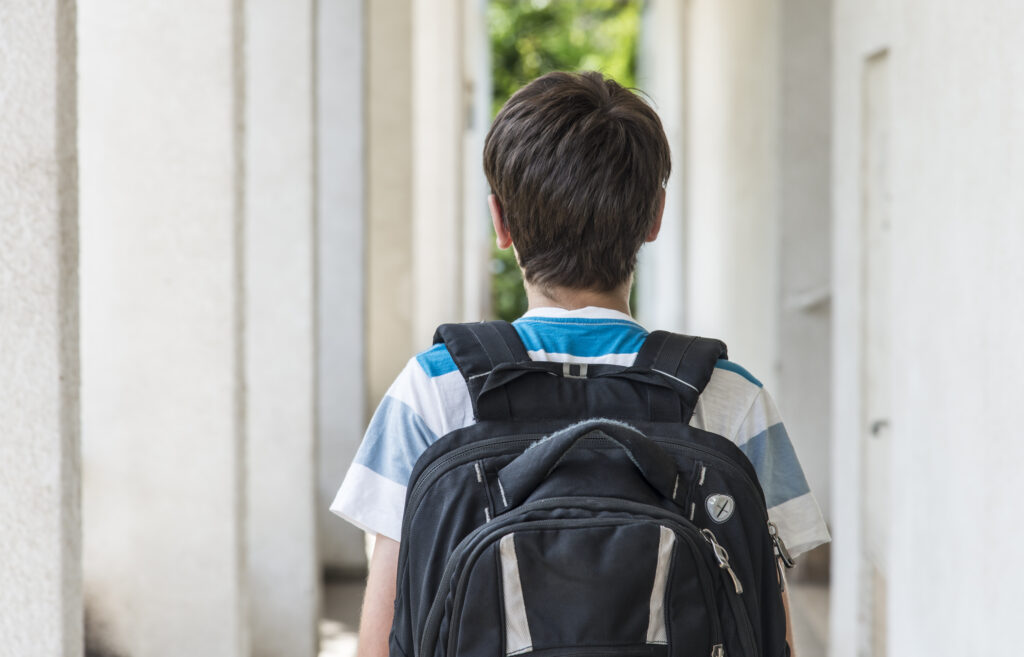Scalable Delivery of Universal Suicide Prevention in Schools
Scalable Delivery of Universal Suicide Prevention in Schools https://pediatricsnationwide.org/wp-content/uploads/2024/04/AdobeStock_90439113-1024x657.jpg 1024 657 Pam Georgiana Pam Georgiana https://pediatricsnationwide.org/wp-content/uploads/2023/07/May-2023.jpg
Implementing the Signs of Suicide (SOS) Prevention and Screening Program
Suicide is the second-leading cause of death among youth ages 10 to 19 years, and data indicate no sign of it decreasing as a major public health issue. While acute care and crisis intervention are critical efforts to reduce adolescent suicide rates, there is a growing need for comprehensive prevention strategies that can be implemented in schools.
“Kids often feel shame or anxiety about telling a trusted adult that they are experiencing suicidal thoughts. Also, school staff often feel unprepared or unwilling to address the issue. It’s time to build upstream suicide prevention strategies to address this growing issue,” John Ackerman, PhD, explains.
Dr. Ackerman is a child clinical psychologist and the Suicide Prevention Clinical Manager in the Big Lots Behavioral Health Pavilion at Nationwide Children’s. His team works with the Center for Suicide Prevention and Research (CSPR). The CSPR leverages the expertise of the teams in the Big Lots Behavioral Health Service Line and the Abigail Wexner Research Institute at Nationwide Children’s. His team has enhanced and supported broad dissemination of the Signs of Suicide Prevention Program (SOS), an evidence-based suicide prevention program for middle and high schools.
The goal of SOS is to reduce youth suicides by teaching students and staff to recognize the signs and symptoms of suicide and depression in themselves and others. When they do, they should follow the ACT® message, which is:
- Acknowledge there is a serious concern
- Care: Show the person you care
- Tell a trusted adult
The core components of SOS include training for school staff and caregivers, engaging activities and vignettes to increase student awareness, and student screening and when necessary, risk evaluations, safety plans, and referrals. The program encourages open conversation about mental health issues, including depression and suicide, among school staff, families, and students. Kids have the opportunity to interact with adults and peers without shame and stigma.
The SOS program has been evaluated in three randomized controlled trials which indicate a 40 to 64% reduction in student self-reported suicide attempts. In addition, students reported increased knowledge of the warning signs, and adults reported an improved awareness and confidence in addressing suicide risk and safety concerns with students.
In 2015, leaders at Nationwide Children’s saw a need for expanded suicide prevention services and started the CSPR. The strategic vision for the CSPR included disseminating evidence-based suicide prevention programming in schools as rapidly as possible to address this growing need. They asked Dr. Ackerman’s CSPR team to implement the SOS program in as many Ohio schools as possible.
Over several years, the team has expanded its reach to work with 250 schools and more than 80,000 students in the 5th through 12th grades. As they completed each program, the team collected feedback from students and adults to refine the SOS approach for better results.
‘We learned very quickly that staff buy-in is imperative. Assessing the staff’s need for training and their feelings about the subject before implementation is critical to success,” Dr. Ackerman says. “We also learned that suicide prevention needs to start earlier than previously thought, even as early as elementary school.”
The CSPR is currently working on developing and evaluating an adaptation for grades 3 to 5.
An important outcome of the SOS program is the ability to leave school administrators and staff with the tools to continue suicide prevention measures long after the CSPR team departs, including risk assessment and safety planning for high-risk students.
“We want staff to feel confident in delivering suicide prevention content to students and to become that trusted adult that students feel safe to confide in,” Dr. Ackerman explains.
The team is always available to retrain and follow up with schools when needed. They have also produced community trainings that complement the SOS program that address the needs of specific audiences, such as LGTBQi+ kids, faith communities, youth of color, families of first responders, or children with developmental disabilities.
Dr. Ackerman’s team has shown that the SOS program is feasible and it can be scaled broadly with administrative support. The results demonstrate that school communities will benefit from investing their limited resources in an evidence-based program such as SOS.
“The bottom line is that prevention starts when kids feel connected and validated. Engagement is critical. That is why the SOS program is so effective,” Dr. Ackerman concludes.
The SOS program is free to any middle or high school in central and southeast Ohio. For more information, visit the SOS website.
About the author
Pam Georgiana is a brand marketing professional and writer located in Bexley, Ohio. She believes that words bind us together as humans and that the best stories remind us of our humanity. She specialized in telling engaging stories for healthcare, B2B services, and nonprofits using classic storytelling techniques. Pam has earned an MBA in Marketing from Capital University in Columbus, Ohio.
- Pam Georgianahttps://pediatricsnationwide.org/author/pam-georgiana/
- Pam Georgianahttps://pediatricsnationwide.org/author/pam-georgiana/
- Pam Georgianahttps://pediatricsnationwide.org/author/pam-georgiana/
- Pam Georgianahttps://pediatricsnationwide.org/author/pam-georgiana/
- Posted In:
- Clinical Updates
- In Brief










